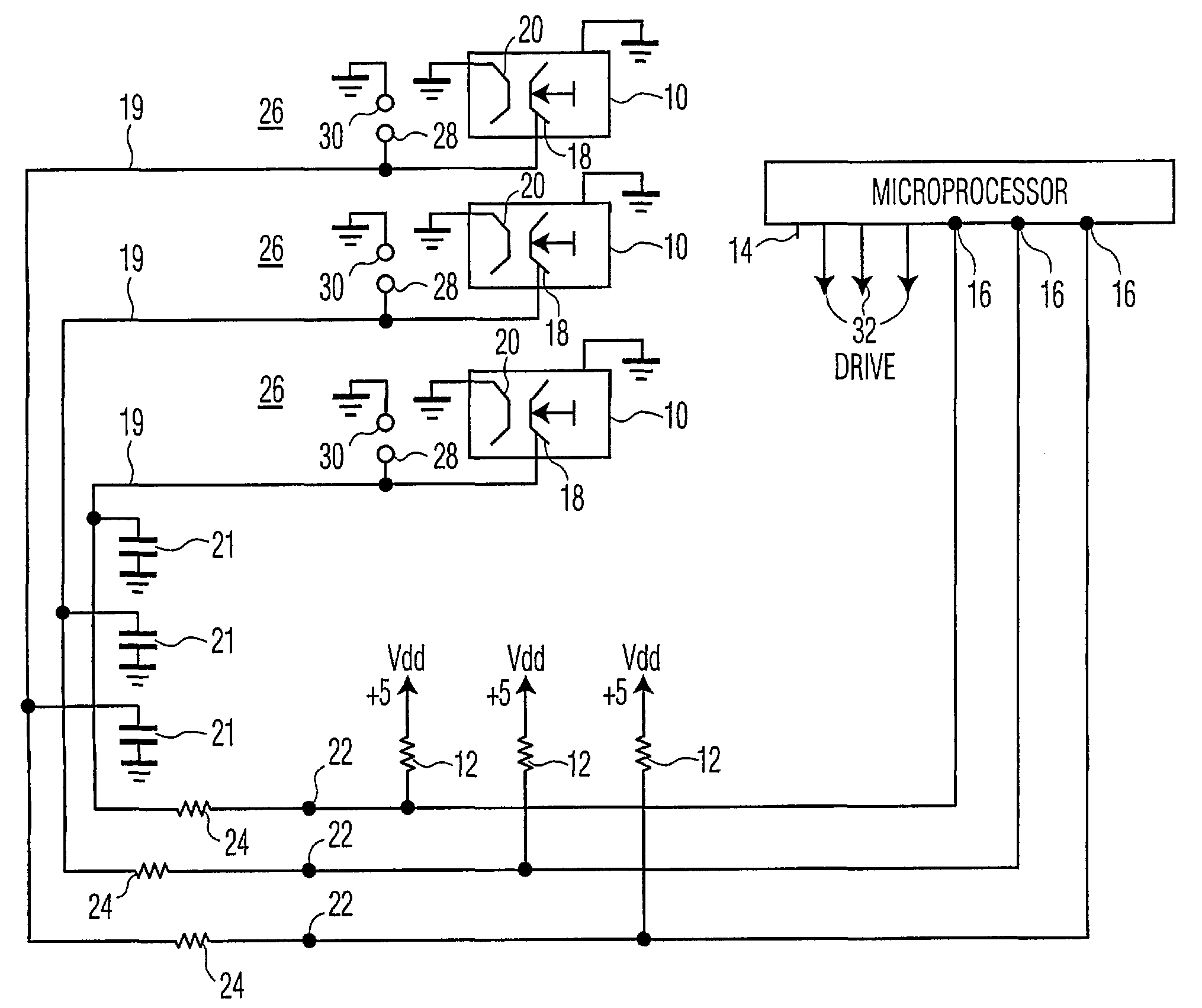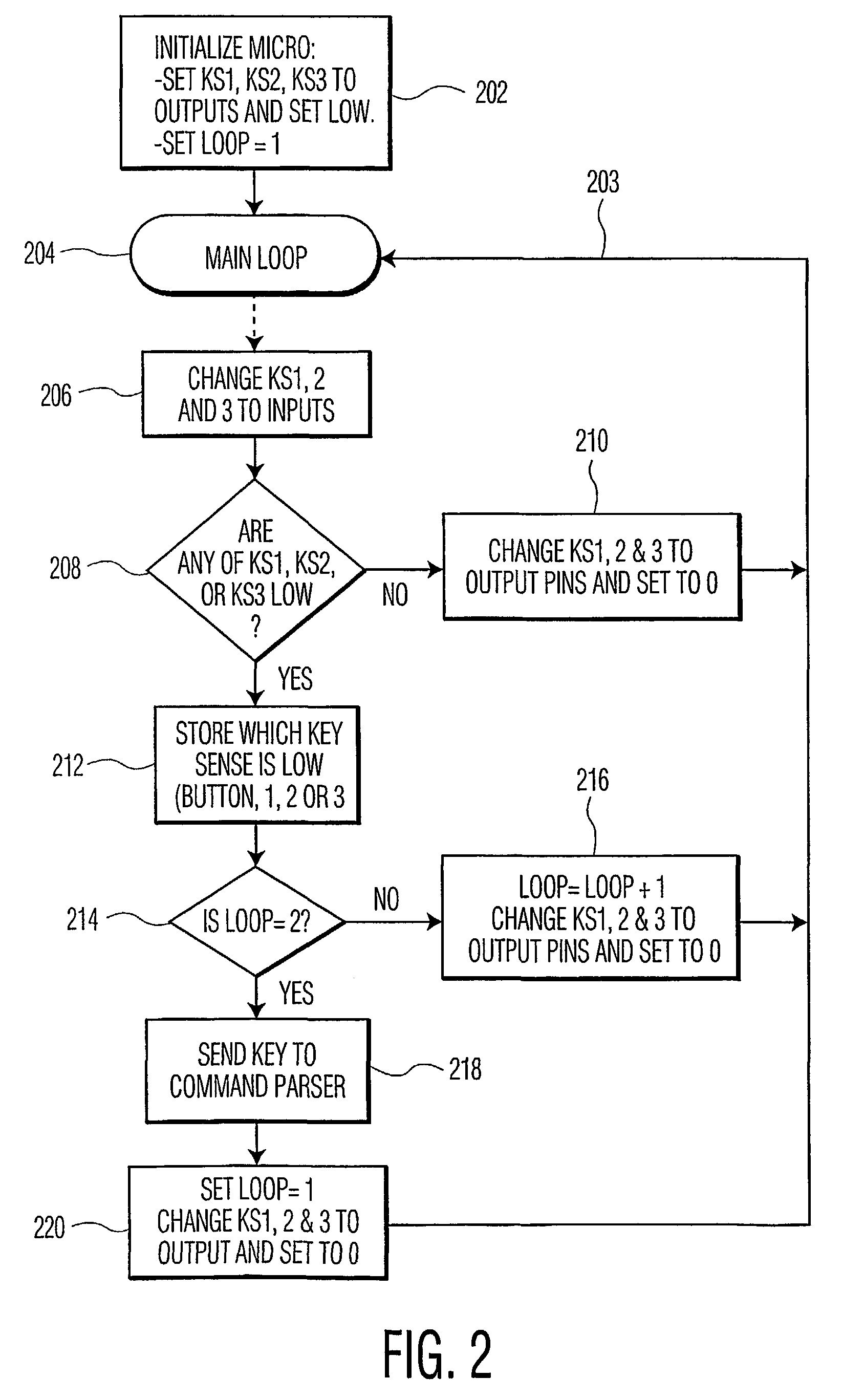Apparatus and method for reducing electromigration
a technology of electromigration and apparatus, applied in the field of apparatus and method for reducing electromigration, can solve the problems of non-trivial distance between dendrites of components, exacerbate problems, and so as to reduce reduce the high bias “on” time. , the effect of reducing the probability of dendrite formation
- Summary
- Abstract
- Description
- Claims
- Application Information
AI Technical Summary
Benefits of technology
Problems solved by technology
Method used
Image
Examples
Embodiment Construction
)
[0011]Referring now to FIG. 1, there is shown a schematic of representative pertinent portions of keyboard switches 10 with respective pull-up resistors 12, and a programmable microprocessor 14 having appropriate ROM, RAM and CPU (not shown), with programmable input / output (I / O) terminals 16 coupled to respective switches 10. The microprocessor of the exemplary embodiment is an ST92196 manufactured by STMicroelectronics Co. and, as is common for such microprocessors, can be programmed for individual I / O terminals 16 to be, inter alia, input terminals or output terminals, in a high or low state. A two hundred page data sheet is available from the manufacturer, to enable those skilled in the art, to circuit design with and program the microprocessor.
[0012]Switches 10 include a printed circuit trace and respective movable contact 18 which is movable into electrical contact with a grounded stationary contact and respective printed circuit trace 20 when a key of a keyboard or keypad (no...
PUM
 Login to View More
Login to View More Abstract
Description
Claims
Application Information
 Login to View More
Login to View More - R&D
- Intellectual Property
- Life Sciences
- Materials
- Tech Scout
- Unparalleled Data Quality
- Higher Quality Content
- 60% Fewer Hallucinations
Browse by: Latest US Patents, China's latest patents, Technical Efficacy Thesaurus, Application Domain, Technology Topic, Popular Technical Reports.
© 2025 PatSnap. All rights reserved.Legal|Privacy policy|Modern Slavery Act Transparency Statement|Sitemap|About US| Contact US: help@patsnap.com



